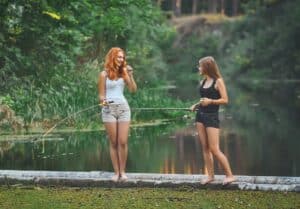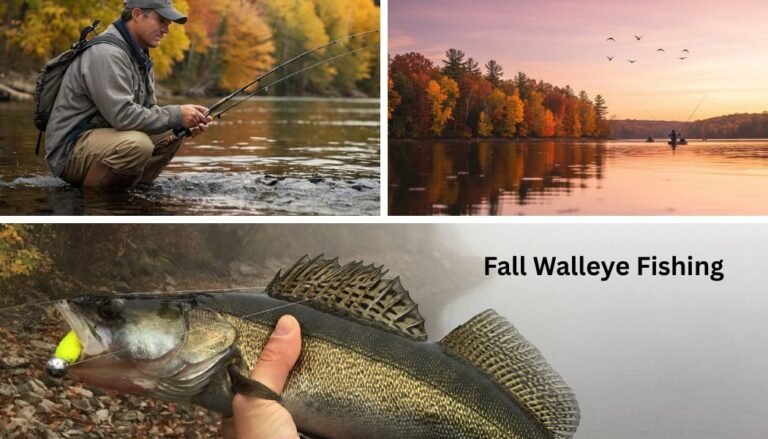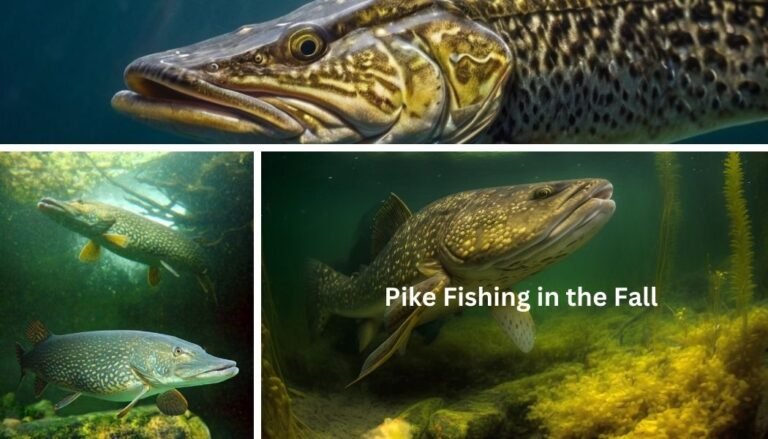Understanding the Importance of Fishing Etiquette
Fishing etiquette encompasses practices that promote respect for nature, fellow anglers, and the fish themselves. By following these guidelines, we contribute to the sustainability of fish populations and the health of aquatic ecosystems.
Fishing is a cherished activity that combines skill, patience, and a deep connection with nature. Whether you are a seasoned angler or a novice, adhering to proper fishing etiquette is crucial. It ensures a respectful and enjoyable experience for all participants and the preservation of our natural environments.
This article will outline the essential do’s and don’ts every fisherman should know. From handling fish properly to respecting other anglers’ space, these practices help maintain the integrity and enjoyment of the sport. Understanding and implementing these etiquette rules is vital for anyone who wants to be a responsible and respected member of the fishing community.
As we delve into the specifics, remember that fishing etiquette is not just about following rules. It is about fostering a sense of stewardship for the environment and building a respectful community of anglers. This approach ensures that future generations can also enjoy the many benefits of fishing.
Respecting Nature and the Environment
Leave No Trace
Leave No Trace is a fundamental principle of outdoor ethics that aims to minimize human impact on natural environments. This concept is essential in fishing to preserve the beauty and health of aquatic ecosystems.
The first step in leaving no trace is to pack out everything you bring with you. This includes all trash, leftover bait, and fishing line. Fishing line, in particular, can be extremely harmful to wildlife if left behind, causing entanglement and injury to birds and other animals.
Stick to established trails and fishing spots to avoid disturbing natural habitats. Trampling vegetation or disrupting riverbanks can cause erosion and damage to the local flora and fauna. Always use existing paths and avoid creating new ones.
Dispose of all waste properly by using designated trash bins or carrying your waste back with you if bins are unavailable. Organic waste, such as leftover bait or fish parts, should not be left in the environment as it can disrupt local ecosystems and attract predators.
Minimize campfire impact if you are fishing in an area where camping is allowed. Use established fire rings, keep fires small, and ensure they are completely extinguished before leaving. Remember, a fire is not completely out until you can put your hand on it.
Respect wildlife by never feeding them and observing from a safe distance. Feeding wildlife can make them dependent on human food and disrupt their natural foraging behavior. Additionally, keep noise to a minimum to avoid disturbing both wildlife and other anglers.
Leave natural objects as you find them. Rocks, plants, and other natural features should be left undisturbed to maintain the environment’s integrity and allow others to enjoy the same natural beauty.
By following these Leave No Trace principles, anglers help protect the environment, ensuring that fishing spots remain pristine and available for future generations. This responsible behavior fosters a sustainable and respectful fishing culture.
Proper Disposal of Waste
Proper waste disposal is vital to maintaining the cleanliness and health of fishing environments. It prevents pollution and protects wildlife from harmful materials.
Firstly, always carry a dedicated bag or container for trash. This ensures that all waste, including food wrappers, cans, and plastic bottles, is collected and not left behind. Dispose of this waste in designated bins or take it home if no facilities are available.
Fishing line can pose a significant threat to wildlife. Birds and aquatic animals can become entangled in discarded line, leading to injury or death. Use a line recycling bin if available, or cut the line into small pieces before disposing of it in the trash to prevent entanglement.
Avoid disposing of organic waste in the water or on the shore, such as leftover bait or fish parts. These materials can disrupt local ecosystems by introducing non-native species or attracting predators. Instead, pack out all organic waste or bury it away from the water, following local guidelines.
Broken gear, such as lures, hooks, and sinkers, should also be packed out. These items can be hazardous to wildlife and other anglers. Carry a small container to store broken or discarded gear until it can be properly disposed of.
When fishing from a boat, secure all waste to prevent it from blowing overboard. Use onboard trash containers and follow the same disposal practices as you would on land.
Finally, participate in or organize cleanup events at your favorite fishing spots. These efforts help remove waste that others may have left behind and raise awareness about the importance of proper waste disposal.
By rigorously adhering to these practices, anglers help maintain the ecological balance and natural beauty of fishing environments, ensuring they remain enjoyable and sustainable for all in the future.
Handle Fish with Care
Handling fish with care is essential for their well-being and the sustainability of fish populations.
Use wet hands or wear gloves when handling fish to minimize damage to their delicate protective slime layer. This layer helps fish resist infections and maintain their health in the water.
- Coated gloves with textured grip
- Heavy duty yet flexible
- Protect hands from fish handling hazards
Avoid touching the gills or eyes of the fish, as these areas are sensitive and prone to injury. Instead, grasp the fish gently by the lower jaw or use a proper fish handling tool designed to minimize stress.
Minimize the time that the fish is out of the water. Extended exposure to air can stress the fish and decrease its chances of survival after being released. Unhook the fish quickly and efficiently, using tools like pliers to facilitate a smooth release process.
Support the fish properly when lifting it out of the water. Cradle the fish horizontally with both hands to avoid bending its body or causing internal injuries. This position helps maintain the fish’s natural posture and reduces stress during handling.
If you are practicing catch-and-release, revive the fish in the water by gently moving it back and forth to ensure proper oxygenation. Release the fish only when it shows signs of strong and purposeful movement, indicating its readiness to swim away.
Avoid unnecessarily weighing or measuring the fish unless required by regulations. Excessive handling can exhaust the fish and decrease its chances of survival after release.
Educate yourself on species-specific handling techniques. Different fish species may require specific handling methods to ensure their survival and minimize stress.
By handling fish with care, anglers contribute to the conservation of fish populations and promote ethical fishing practices. This responsible behavior ensures that fishing remains sustainable and enjoyable for future generations.
Avoid Sensitive Areas
Avoiding sensitive areas is crucial to protect fragile ecosystems and ensure the sustainability of fish populations.
Identify sensitive areas by familiarizing yourself with local regulations and signage. These areas often include spawning grounds, breeding habitats, and protected zones where human activity is restricted to preserve ecological balance.
Respect all posted signs and barriers indicating restricted areas. These signs are in place to protect vulnerable habitats and wildlife, and ignoring them can lead to ecological damage and legal consequences.
Avoid fishing in spawning grounds, especially during breeding seasons. Disturbing fish during spawning can disrupt their reproductive processes, leading to a decline in fish populations.
Stay clear of nesting sites and vegetation-rich areas. These spots are often home to juvenile fish and other wildlife that are particularly vulnerable to disturbance. Walking or wading through these areas can cause significant harm to the habitat and its inhabitants.
Use existing trails and designated access points to reach fishing spots. Creating new paths or shortcuts can lead to habitat destruction and increased erosion, negatively impacting the local ecosystem.
Be mindful of your boat’s wake and anchor placement when fishing in sensitive aquatic environments. High wakes can erode shorelines and disturb wildlife, while improperly placed anchors can damage underwater habitats such as coral reefs and seagrass beds.
Respect seasonal closures and no-fishing zones. These restrictions are implemented to allow fish populations and ecosystems to recover from human activity and maintain their natural balance.
Educate yourself about the specific needs and vulnerabilities of the ecosystems you fish in. Understanding the unique characteristics of these environments helps you make informed decisions that protect them.
By avoiding sensitive areas, anglers play a vital role in conserving aquatic habitats and ensuring the long-term health of fish populations. This responsible behavior supports the preservation of biodiversity and the overall health of our natural environments.
Respecting Fellow Anglers
Give Others Space
Giving others space is essential for maintaining a respectful and enjoyable fishing environment.
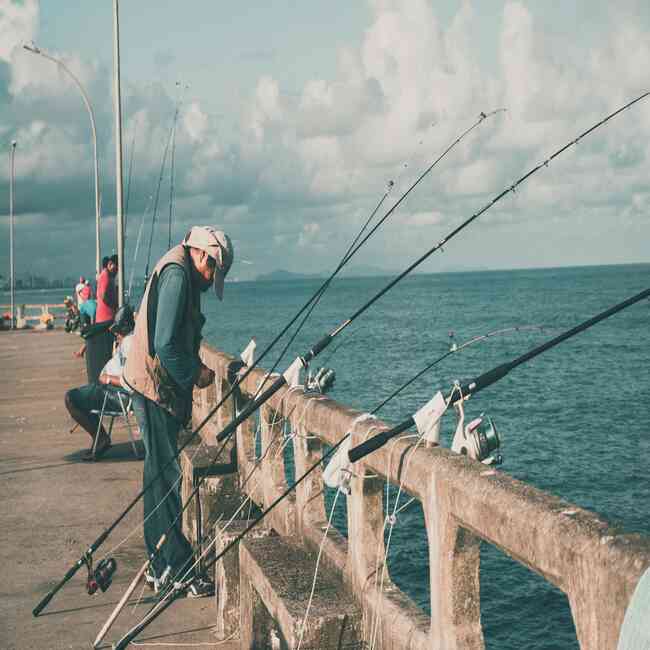
When possible, maintain a minimum distance of 50 to 100 feet from other anglers. This distance helps prevent lines from tangling and reduces interference with each other’s fishing activities.
Avoid casting your line in close proximity to others. This practice minimizes the risk of crossing lines and causing frustration or disputes.
Be mindful of your movements in shared fishing areas. Avoid unnecessary noise or disruptive actions that could disturb other anglers and the fish they are targeting.
Respect personal space on boats. When fishing from a shared vessel, be aware of your companions’ space and ensure that your gear and actions do not interfere with theirs.
Understand local customs regarding space. In some regions, specific distances or practices are customary, and adhering to these helps maintain harmony among anglers.
Communicate with nearby anglers if you need to pass through their area. A simple gesture or polite request ensures that you do not disturb their fishing experience.
Avoid crowding popular fishing spots during peak times. Instead, explore less crowded areas to fish, which can lead to a more enjoyable and peaceful experience for everyone.
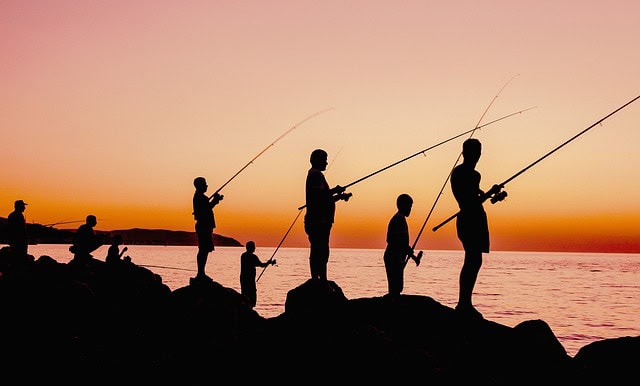
By giving others space, anglers promote a courteous and respectful fishing culture. This practice enhances the overall experience for everyone and helps maintain a positive atmosphere at fishing spots.
Communicate Clearly
Clear communication is vital for a harmonious and safe fishing experience.
Inform nearby anglers before you cast your line. A simple heads-up prevents unexpected tangles and ensures everyone is aware of each other’s actions.
Use hand signals or verbal cues to indicate your intentions, such as moving to a new spot or casting in a specific direction. This clarity helps avoid confusion and potential conflicts.
Politely ask for advice or information. If you need guidance on local conditions or fishing techniques, approach other anglers respectfully and ask for their insights.
Communicate any issues or concerns promptly and respectfully. If someone’s actions are affecting your fishing, address the situation calmly and courteously to find a mutually agreeable solution.
Signal your catch. If you hook a fish and it’s moving towards another angler’s area, inform them quickly to prevent entanglements and facilitate a smooth retrieval.
Use radios or other communication devices effectively when fishing with a group. Establish clear channels and protocols to coordinate actions and ensure everyone stays informed and safe.
Respect quiet zones. If fishing in an area where silence is valued, such as fly fishing streams, communicate softly to avoid disturbing the peace and other anglers.
Share information about hazards. If you notice dangerous conditions, such as slippery rocks or strong currents, inform others nearby to ensure their safety.
By communicating clearly, anglers foster a cooperative and respectful environment. This practice reduces misunderstandings, enhances safety, and improves the overall fishing experience for everyone involved.
Follow Local Customs and Rules
Adhering to local customs and rules is essential for maintaining respect and harmony in fishing communities.
Research local fishing regulations before you go. This includes knowing the legal fishing seasons, size and bag limits, and specific gear restrictions for the area.
Obtain necessary permits and licenses. Ensure you have all required documentation to fish legally in the area and keep these documents accessible while fishing.
Respect private property. If fishing on private land, always seek permission from the landowner and follow any specific guidelines they provide.
Adhere to designated fishing areas. Fish only in areas where fishing is allowed and avoid restricted zones to protect sensitive habitats and comply with local laws.
Observe cultural practices. In some regions, fishing customs may be influenced by cultural traditions. Familiarize yourself with these practices and follow them to show respect to the local community.
Participate in local conservation efforts. Engage with local initiatives aimed at preserving fish populations and habitats, such as cleanup events or conservation programs.
Respect local catch-and-release practices. If the local custom is to release certain species, adhere to these practices to support conservation efforts.
Understand and follow boating regulations. If fishing from a boat, comply with local navigation rules, speed limits, and boat launch procedures to ensure safety and respect for others.
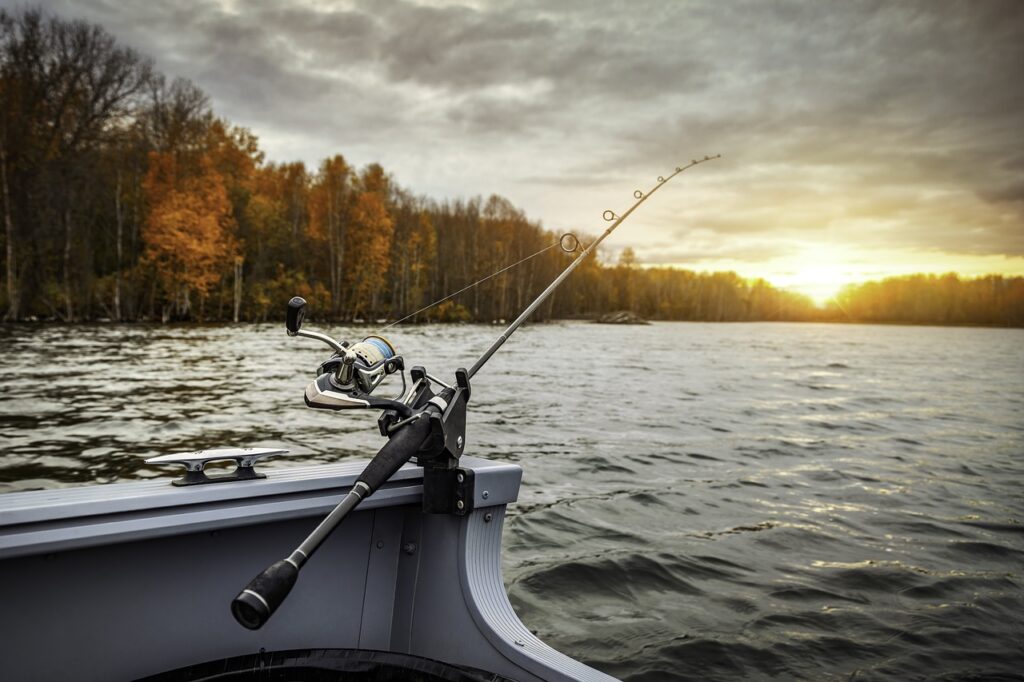
Be aware of and follow any special regulations for protected species. Some areas may have specific rules to protect endangered or vulnerable fish species.
By following local customs and rules, anglers demonstrate respect for the community and the environment. This practice ensures a positive experience for everyone and helps preserve fishing opportunities for future generations.
Ethical Fishing Practices
Know the Regulations
Understanding and following fishing regulations is crucial for sustainable and legal fishing practices.
Research regional fishing laws before your trip. These regulations vary by location and the body of water and can include rules on seasons, size limits, and allowable gear.
Check for seasonal restrictions. Many areas have specific times of the year when certain fish species can be legally caught to protect them during breeding seasons.
Adhere to size and bag limits. These limits are established to prevent overfishing and ensure healthy fish populations. Measure your catch accurately and release any fish that do not meet legal size requirements.
Understand species-specific regulations. Some fish may have special protections or restrictions. Familiarize yourself with the local fish species and their regulations.
Obtain necessary fishing licenses and permits. Ensure you have all required documentation and keep them with you while fishing to avoid fines and legal issues.
Follow gear restrictions. Some areas may prohibit certain types of gear, such as nets or traps, to protect fish populations and habitats. Use only the gear allowed by local regulations.
Stay updated on regulation changes. Fishing laws can change based on environmental conditions and conservation needs. Regularly check for updates to stay compliant.
Report your catch if required. Some regions require anglers to report their catch to monitor fish populations and the effectiveness of regulations. Provide accurate information to support conservation efforts.
Respect protected areas and species. Some regions have no fishing zones or protected species. To comply with conservation laws, avoid these areas and species.
By knowing and adhering to regulations, anglers contribute to the sustainability of fish populations and the protection of aquatic ecosystems. This responsible behavior ensures that fishing remains a viable and enjoyable activity for future generations.
Use Appropriate Gear
Using appropriate gear is essential for ethical and practical fishing, ensuring both the angler’s success and the well-being of fish populations.
- UGLY STIK 6’6” GX2 SPINNING FISHING ROD AND REEL SPINNING COMBO: The next-gen Ugly Stik,…
- UGLY TECH CONSTRUCTION: 2-piece, Ugly Tech construction combines graphite and fiberglass, for a…
- SIZE 35 REEL: 4 ball bearing system for smooth operation. Features 6 guides to provide durability…
Select gear suited to your target species. Different fish require specific types of rods, reels, lines, and hooks. Using the right gear increases your chances of a successful catch and reduces the risk of harming the fish.
Choose hooks that minimize harm. Barbless hooks or hooks designed for catch and release can significantly reduce injury to fish, making them easier to release unharmed.
Match your line strength to your target fish. Using a line that is too strong can result in unnecessary force on the fish, while a line that is too weak increases the risk of breaking and losing tackle in the water.
Use appropriate bait and lures. Select bait or lures that are effective for your target species and appropriate for the local environment. Avoid using live bait that could introduce non-native species to the area.
Try to avoid using lead-based tackle. Lead can be toxic to wildlife. Use alternatives like tin, steel, or tungsten to reduce environmental impact.
Equip yourself with tools for safe handling and release. This includes pliers, de-hookers, and landing nets with rubberized mesh to minimize stress and injury to the fish.
- What You Get – 1*Fishing Plier (Totally Length: 6.5inch, Weight: 2.82oz ); 1* Fish Lip Gripper with…
- Multi-Functional Fishing Pliers – This fishing plier can easily Split Rings, Remove Hooks, Strip…
- Fish Lip Gripper – The fish lip grip tool has a strong grip that easily controls the big fish, easy…
Carry and use a tackle box to organize and store your gear properly. This helps you quickly access the appropriate gear and maintain its condition, ensuring efficiency and readiness.
Regularly inspect and maintain your gear. Check for wear and tear on your lines, hooks, and other equipment to prevent gear failure during fishing, which can harm fish and disrupt the fishing experience.
Adapt gear to the environment. For instance, use lighter tackle for clear, shallow waters and heavier gear for deeper or more turbulent waters, ensuring you can fish effectively and responsibly.
By using appropriate gear, anglers promote sustainable fishing practices, enhance their effectiveness, and minimize harm to fish and their habitats. This responsible approach ensures a balanced and ethical fishing experience.
Practice Catch and Release Responsibly
Practicing catch and release responsibly is crucial for conserving fish populations and maintaining healthy ecosystems.
Use barbless hooks or circle hooks. These hooks cause less injury and make it easier to release fish quickly and safely.
Minimize handling time. Keep the fish in the water as much as possible and handle it quickly to reduce stress and increase its chances of survival.
Handle fish with wet hands or wear gloves. This prevents the removal of the protective slime layer that helps fish resist infections.
Support the fish properly. Use both hands to cradle the fish horizontally, avoiding excessive pressure on its body and internal organs.
Avoid touching the gills and eyes. These areas are sensitive and essential for the fish’s survival. Handle the fish by the body, not by these critical parts.
Use appropriate tools for unhooking. Pliers or de-hookers can help remove hooks quickly and safely without causing additional harm to the fish.
- Comfort nonslip grips
- Durable construction
- Corrosion resistant stainless steel
Revive the fish before release. Gently hold the fish in the water, facing into the current, and move it back and forth to allow water to flow over its gills until it swims away on its own.
Avoid fishing in extreme temperatures. Fish are more stressed in very hot or cold water, which can decrease their chances of surviving after release.
Use strong enough tackle. This reduces the fight time and the stress on the fish, allowing for a quicker release.
Avoid removing fish from deep water too quickly. Rapid changes in pressure can harm fish. Use techniques to help them adjust, such as venting tools, if appropriate and legal.
By practicing responsible catch and release, anglers help ensure the sustainability of fish populations and the health of aquatic ecosystems. This approach balances the enjoyment of fishing with the necessity of conservation.
Avoid Overfishing
Avoiding overfishing is essential to maintain fish populations and preserve the health of marine and freshwater ecosystems.
Understand fish population dynamics. Different species have varying reproductive rates and vulnerabilities to fishing pressure. Educate yourself on the specific biology and life history of the fish you are targeting.
Adhere to catch limits and regulations. These limits are set based on scientific assessments of fish stocks and are designed to prevent overfishing. Respect these regulations to ensure sustainable fishing opportunities for future generations.
Practice selective fishing techniques. Target specific species and sizes rather than harvesting indiscriminately. Avoid taking undersized fish or species that are known to be vulnerable or in decline.
Use sustainable fishing gear and methods. Choose gear that minimizes bycatch and habitat damage, such as selective gear types and techniques that reduce environmental impact.
Participate in fisheries management efforts. Engage with local fishery management organizations, attend public meetings, and provide input on sustainable fishing practices and policies.
Educate others about the importance of sustainable fishing practices. Spread awareness among fellow anglers and the wider community about the impacts of overfishing and the benefits of sustainable fisheries management.
Monitor and report illegal fishing activities. Report suspicious or illegal fishing practices to relevant authorities to help enforce fishing regulations and prevent overexploitation of fish stocks.
Consider the broader ecosystem impacts. Recognize that overfishing can disrupt food webs and ecosystem stability, affecting other species dependent on fish populations for survival.
By avoiding overfishing, anglers play a critical role in conserving fish populations, maintaining healthy ecosystems, and ensuring sustainable fishing opportunities for future generations. This responsible approach supports biodiversity and the long-term health of our marine and freshwater environments.
Embracing Fishing Etiquette: Ensuring Sustainability and Enjoyment
In conclusion, fishing etiquette stands as a cornerstone of responsible angling, fostering a culture of respect and stewardship among anglers worldwide. By adhering to etiquette guidelines, anglers play a pivotal role in conserving natural habitats and safeguarding fish populations for future generations.
Respecting the environment through practices like proper waste disposal, avoiding sensitive areas, and handling fish with care not only preserves the integrity of aquatic ecosystems but also enhances the overall fishing experience for everyone involved.
Furthermore, adherence to local regulations and customs demonstrates a commitment to sustainable fishing practices, ensuring that fishing remains a sustainable and enjoyable activity for years to come.
Ultimately, embracing fishing etiquette is not just about following rules; it is a collective effort to maintain the health of our waters, promote ethical angling practices, and preserve the natural beauty of our aquatic environments.
FAQ Section
What is fishing etiquette?
Fishing etiquette refers to a set of guidelines and practices that anglers follow to ensure respectful and responsible behavior while fishing. It includes considerations for the environment, fellow anglers, and the fish themselves.
Why is fishing etiquette important?
Fishing etiquette is important for several reasons. It helps maintain healthy fish populations and ecosystems by minimizing environmental impact. It promotes a positive fishing experience for all anglers by preventing conflicts and promoting harmony on the water. Following etiquette also ensures compliance with local regulations and demonstrates respect for fishing traditions and community norms.
What are some key principles of fishing etiquette?
Key principles of fishing etiquette include respecting fishing regulations and catch limits, properly disposing of waste, handling fish with care to minimize harm, giving other anglers space, and participating in conservation efforts. These principles help protect natural habitats, support sustainable fishing practices, and preserve fishing opportunities for future generations.
How can I handle fish with care?
Handle fish with wet hands or gloves to protect their delicate slime coating, which helps prevent infections and aids in their survival. Use barbless hooks or pliers to safely remove hooks and minimize the time fish are out of water to reduce stress. Support fish horizontally when lifting them, avoiding injury to their bodies or internal organs.
What should I do if I encounter other anglers on the water?
Give other anglers plenty of space to fish comfortably. Avoid casting near their lines to prevent tangles and disruptions. Communicate politely if you need to pass by or if there are concerns about shared fishing spots. Respecting others’ fishing areas and practices promotes a positive atmosphere and enjoyable experience for everyone.
Where can I learn more about fishing etiquette and regulations?
You can learn more about fishing etiquette and regulations from local fishing authorities, state or provincial wildlife departments, fishing organizations, and online resources. These sources provide information on specific rules, best practices, and updates regarding fishing in your area. Keeping informed helps ensure you are fishing responsibly and in accordance with local laws.
Disclaimer: This blog post contains affiliate links

